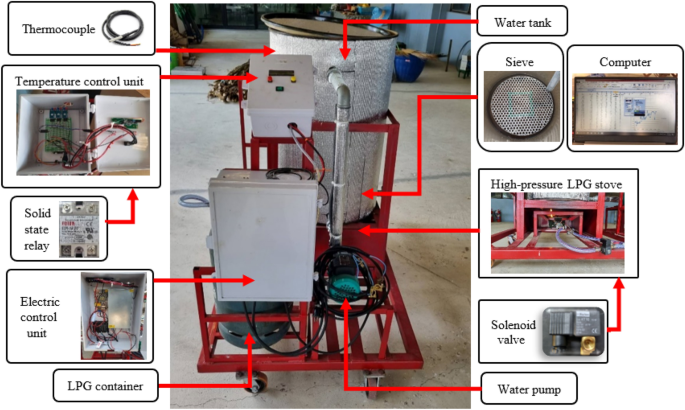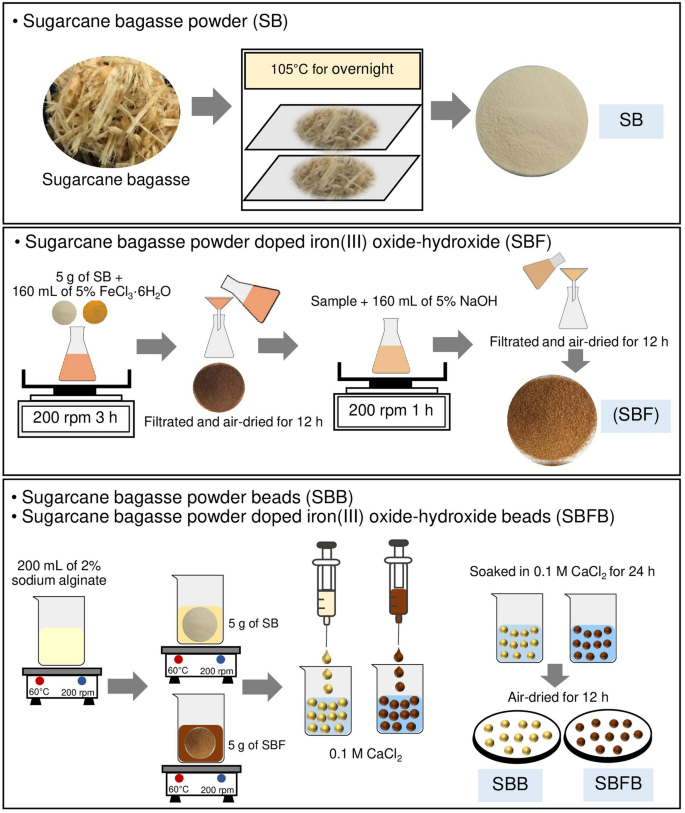Products From Sugarcane and Their Role in Reducing Carbon Emissions
Products From Sugarcane and Their Role in Reducing Carbon Emissions
Blog Article
Discover the Cutting-edge Advantages of Products From Sugarcane for Sustainable Living
Sugarcane has actually emerged as a critical resource in the mission for sustainable living. Its varied applications cover eco-friendly packaging, renewable power, and healthier food choices. As markets seek green alternatives, sugarcane's flexibility offers promising remedies. The real capacity of sugarcane expands past its current usages. Discovering its ingenious benefits can reveal brand-new paths toward a more lasting future. What other possibilities might this impressive plant hold?

The Rise of Sugarcane as a Lasting Resource
As worldwide recognition of ecological issues grows, sugarcane has become a noticeable lasting resource. This functional plant provides an array of benefits that add to environmentally friendly methods. Sugarcane is a renewable energy, with the ability of prospering in varied climates while absorbing carbon dioxide, thereby mitigating greenhouse gas exhausts. Its fast development cycle enables regular harvesting, causing a continuous supply of raw material.Additionally, sugarcane growing commonly calls for less water contrasted to other plants, making it a reliable alternative in water-scarce areas. The spin-offs of sugarcane, such as bagasse and molasses, can be repurposed for different applications, reducing waste and advertising circular economic climate concepts. Furthermore, innovations in farming methods have actually brought about more sustainable farming techniques, additionally improving sugarcane's environmental account. As consumers significantly look for sustainable alternatives, sugarcane stands apart as a feasible choice for those committed to decreasing their eco-friendly footprint.
Eco-friendly Product Packaging Solutions
Exactly how can eco-friendly packaging remedies change the way customers come close to sustainability? By using sugarcane-based materials, these innovative solutions offer a compelling alternative to conventional plastics. Naturally degradable product packaging made from sugarcane decomposes normally, markedly lowering garbage dump waste and greenhouse gas discharges. As customers end up being increasingly knowledgeable about their ecological effect, the need for lasting product packaging continues to rise.These sugarcane-derived items not just serve sensible objectives however likewise align with eco-conscious consumer values. They give a concrete method for services and individuals to add to a circular economic situation, promoting source effectiveness and minimizing ecological footprints. In addition, as industries adopt naturally degradable choices, they cultivate a society of sustainability that reverberates with an expanding group looking for responsible choices.In significance, eco-friendly packaging options from sugarcane represent a vital advance in sustainable practices, encouraging customers to make eco-friendly choices without compromising convenience or top quality.
Renewable Energy Generation From Sugarcane
A considerable section of renewable resource generation can be stemmed from sugarcane, showcasing its convenience beyond traditional farming usages. Sugarcane biomass, consisting of bagasse and leaves, is a powerful source for bioenergy production. This biomass can be exchanged biofuels such as ethanol, which functions as a cleaner choice to nonrenewable fuel sources. Additionally, the combustion of sugarcane by-products generates vapor and electrical power, providing an energy source for sugar mills and close-by communities.The farming of sugarcane also adds to carbon sequestration, as the plants soak up co2 during their growth cycle. By making use of sugarcane for energy, waste is reduced, and sustainable practices are encouraged. This renewable resource approach not only supports energy needs however additionally promotes country development, creating tasks in bioenergy fields. Overall, sugarcane stands apart as a principal in the change to sustainable energy options, lining up with international efforts to minimize carbon footprints.
Eco-Friendly Textiles and Fabrics
Environment-friendly textiles and materials acquired from sugarcane offer an encouraging option to traditional materials. These naturally degradable options not just minimize environmental impact yet likewise offer resilience and performance similar to standard materials. Lasting manufacturing procedures additionally enhance their appeal, making them an indispensable part of a lasting way of life.
Biodegradable Material Alternatives
Why is the modification toward eco-friendly fabric options important for sustainable living? The enhancing recognition of ecological degradation has actually prompted a look for choices to standard fabrics, which often add to pollution and waste. Eco-friendly materials, stemmed from eco-friendly sources such as sugarcane, offer an appealing option. These products disintegrate normally, lowering land fill accumulation and minimizing ecological impact. In addition, they can help lower carbon footprints and reliance on fossil gas. As consumers end up being more eco-conscious, the demand for sustainable fabrics grows, encouraging makers to introduce and spend in naturally degradable alternatives. This adjustment not just supports sustainable methods however likewise promotes a round economic situation, leading the method for an extra liable approach to style and textile manufacturing.
Toughness and Efficiency
When evaluating environmentally friendly textiles and fabrics, durability and efficiency are vital elements. Sugarcane-derived materials demonstrate excellent strength and resilience, making them suitable for various applications. These fabrics usually exhibit premium moisture-wicking homes, which enhance convenience in day-to-day wear. In addition, their natural fibers add to breathability, making sure that garments stay fresh and wearable even popular problems. The performance of sugarcane-based materials encompasses their resistance to tear and use, allowing products to maintain their honesty with time. In addition, these green fabrics can be dealt with to boost UV protection and tarnish resistance, satisfying the functional demands of customers without endangering sustainability. Inevitably, sugarcane fabrics use a harmonious check out here balance of durability and efficiency, attracting environmentally mindful people.
Lasting Manufacturing Procedures
The remarkable resilience and performance of sugarcane-derived fabrics are enhanced by sustainable production procedures that focus on environmental duty. These processes use renewable energies, lessening reliance on nonrenewable fuel sources and decreasing carbon impacts. By harnessing the byproducts of sugarcane growing, makers can produce green textiles while advertising waste decrease. Advanced strategies, such as water-efficient dyeing and eco-friendly therapies, additionally boost the sustainability of these fabrics. In addition, the usage of safe chemicals assurances that the manufacturing procedure does not damage communities or human health. This commitment to sustainability not just interest ecologically conscious customers yet also sustains neighborhood economic situations by advertising sustainable farming techniques. Overall, sugarcane-derived fabrics represent a significant step towards a greener future in the fashion business.
Sugarcane-Based Biofuels and Their Impact

Sugarcane-based biofuels have actually arised as a substantial alternate energy resource, providing a sustainable remedy to the world's expanding energy demands. These biofuels, stemmed from the fermentation of sugarcane juice or molasses, present an even more sustainable choice contrasted to fossil fuels. Their production procedure generates reduced greenhouse gas emissions, adding to climate change mitigation efforts.Additionally, sugarcane biofuels can enhance power security by expanding energy sources and decreasing dependence on imported oil. The growing of sugarcane also promotes country advancement, producing work and promoting local economies.However, issues concerning land use and food competition continue, as boosted biofuel manufacturing may influence food supply chains. Sustainable farming techniques are crucial to stabilizing these completing rate of interests and making sure that biofuel manufacturing does not threaten food safety. Overall, sugarcane-based biofuels stand for an encouraging method for a greener energy future, supplied that their social and ecological ramifications are very carefully taken care of.
Healthier Alternatives: Sugarcane in Food Products
While numerous consumers look for much healthier alternatives in their diet regimens, sugarcane products use a nourishing option to improved sugars and sweetening agents. Originated from the all-natural extraction of sugarcane juice, these items preserve necessary nutrients, consisting of minerals and vitamins, that are usually shed in processed sugars. Sugarcane contains anti-oxidants and dietary fiber, contributing to general health and wellness and wellness.Many health-conscious people are transforming to sugarcane syrup and jaggery, which give a lower glycemic index compared to conventional sugars, making them appropriate for those taking care of blood sugar degrees. Furthermore, sugarcane-derived sweeteners can enhance the flavor of various dishes without the adverse effects related to fabricated additives.This change towards all-natural sweetening agents not only promotes far better nutritional choices but additionally straightens with sustainable living techniques, as sugarcane is an eco-friendly resource. Sugarcane items are arising as beneficial options in the domain name of food items.
The Future of Sugarcane in Lasting Developments
The future of sugarcane is positioned to include innovative applications that expand past traditional usages. Its possible as a source for naturally degradable packaging services and sustainable power resources highlights its role in sustainable practices. Exploring these innovations can substantially affect environmental conservation and source management.
Eco-friendly Packaging Solutions
A boosting number of business are transforming to naturally degradable product packaging services originated from sugarcane as a promising choice to standard plastics. These cutting-edge materials, often made from sugarcane fibers and bioplastics, disintegrate naturally, decreasing the resilient ecological impact related to standard plastic waste. By making use of renewable energies, sugarcane-based product packaging adds to a more lasting production cycle, lining up with worldwide initiatives to battle pollution and environment change. Additionally, these options usually maintain the sturdiness and capability needed for numerous applications, from food containers to delivery products. As consumer need for green options expands, businesses taking on sugarcane product packaging not only improve their brand name image yet additionally play a crucial function in fostering a circular economic situation, paving the method for a greener future.
Renewable Energy Sources
Naturally degradable product packaging solutions are just one facet of the wider capacity of sugarcane in promoting sustainability. Another considerable application exists in renewable energy resources. Sugarcane is a flexible plant that can be utilized to generate biofuels, such as ethanol, which functions as a cleaner alternative to nonrenewable fuel sources. The fermentation process of sugarcane juice returns ethanol that can power lorries and produce power. In addition, the results of sugarcane processing, like bagasse, can be used to produce biomass energy, supplying a sustainable and effective this post method to harness power. This dual duty as both a resource of biofuel and biomass underscores sugarcane's potential in lowering carbon discharges and supporting a change to an extra sustainable power landscape in the future.
Often Asked Questions
Just How Is Sugarcane Gathered Sustainably?
Sugarcane harvesting can be sustainable via methods like manual cutting, which decreases dirt disturbance, and using equipment that minimizes fuel intake (Products From Sugarcane). Plant rotation and incorporated insect management better boost environmental health and promote long-lasting soil fertility
What Are the Environmental Influences of Sugarcane Farming?

Can Sugarcane Products Be Recycled?
The concern of whether sugarcane items can be recycled reveals a positive overview. Several sugarcane-derived materials, such as bioplastics and packaging, are made for recyclability, adding to an extra lasting waste management method within ecological factors to consider.
Exist Any Kind Of Disadvantages to Using Sugarcane-Based Products?
The drawbacks of utilizing sugarcane-based products consist of prospective land usage competition with food plants, obstacles in massive manufacturing, and concerns about the ecological effect of monoculture farming methods, which can decrease biodiversity and soil health.
How Does Sugarcane Farming Affect Citizen Communities?
Sugarcane growing impacts neighborhood areas by supplying job opportunity and enhancing local economies. However, it can also bring about land disputes and environmental worries, affecting farming methods and neighborhood health, requiring a balanced technique to development. Innovations in farming techniques have led to more sustainable farming methods, additionally boosting sugarcane's ecological profile. Furthermore, the burning of sugarcane by-products produces heavy steam and power, supplying an energy source for sugar mills and nearby communities.The cultivation of sugarcane additionally contributes to carbon sequestration, as the plants soak up carbon dioxide during their growth cycle. By utilizing sugarcane for energy, waste is reduced, and lasting methods are encouraged - Products From Sugarcane. Sugarcane consists of anti-oxidants and dietary fiber, adding to total health and wellness.Many health-conscious people are transforming to sugarcane syrup and jaggery, which supply a lower glycemic index compared to standard sugars, making them suitable for those handling blood sugar degrees. In addition, the byproducts of sugarcane processing, like bagasse, can be this post made use of to generate biomass energy, using a lasting and efficient method to harness energy
Report this page